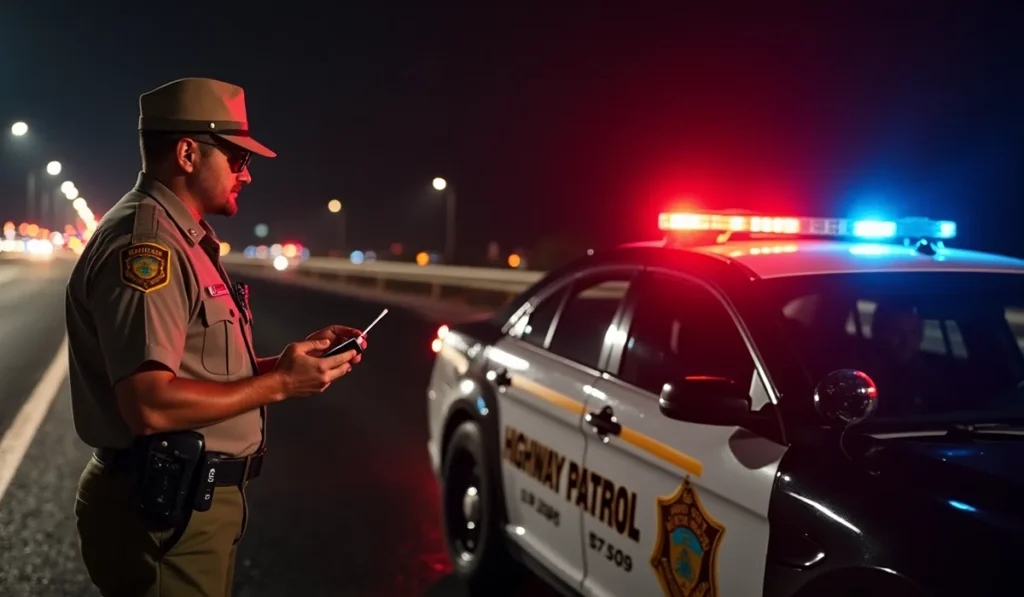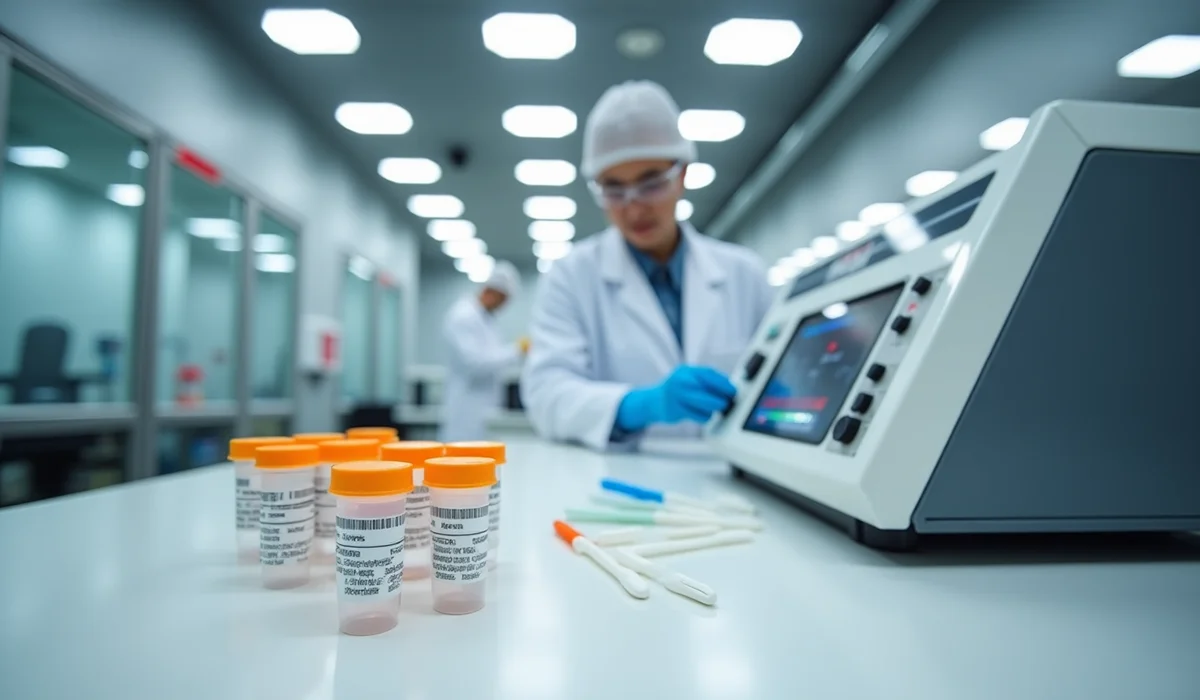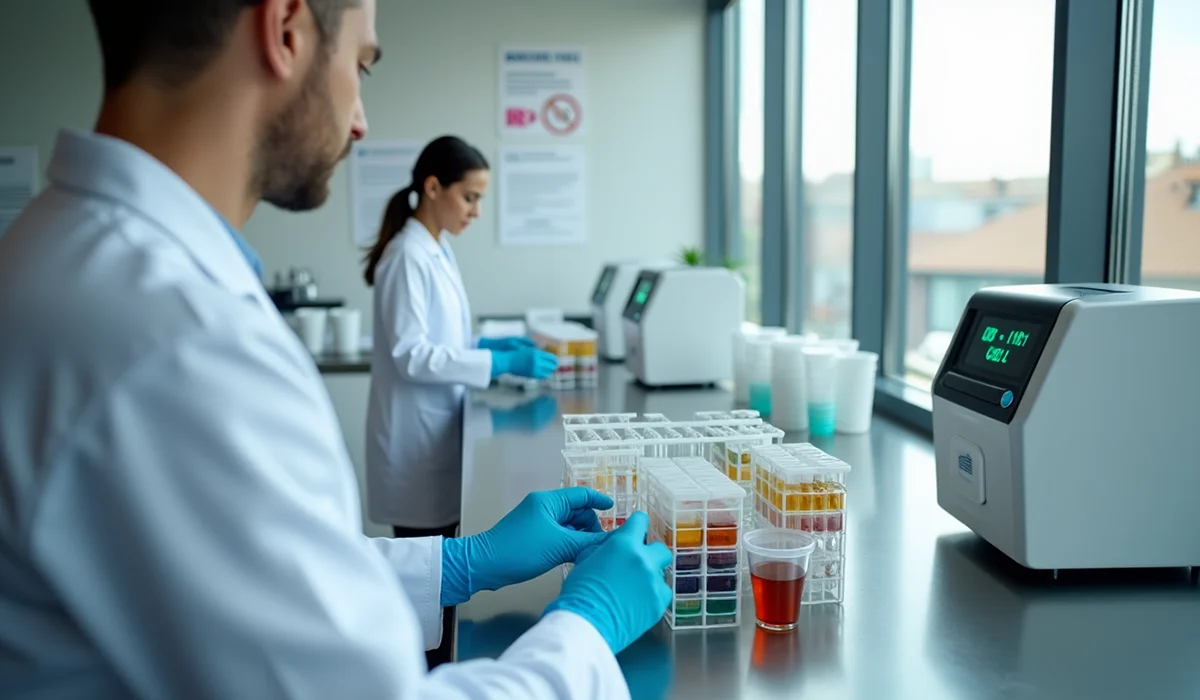Ohio Highway Patrol has launched an innovative program that will revolutionize impaired driving detection on roads. The state began its pilot program in August 2024 to implement oral marijuana testing for drivers statewide, focusing on advanced roadside impaired driving enforcement and cannabis impairment detection.
Ohio state troopers have made a fundamental change to their roadside marijuana impairment testing methods. The new approach uses a simple mouth swab that works better and proves less invasive than blood or urine tests for drug-impaired driving. This program will run until August 2025, showing the patrol’s steadfast dedication to road safety while protecting driver’s dignity through gentler testing methods. The testing becomes more reliable because it detects active substances in a person’s system right when the test happens, which gives a clearer picture of current impairment and psychomotor impairment.
Ohio State Troopers Deploy New Cannabis Detection Technology
Ohio’s state highway patrol has rolled out a sophisticated oral fluid testing system to boost their impaired driving detection program. The new testing method uses a specialized swab that makes contact with the driver’s cheeks and tongue [1].
The collected samples go through analysis using an immunoassay method. This process lets antibodies interact with drug compounds found in the oral fluid [1]. Testing proves quicker than traditional methods because oral fluid is easy to collect and readily available [2].
The program makes a clear distinction between roadside detection and evidentiary testing approaches. Ohio’s highway patrol has focused on evidentiary testing, which sends samples to crime laboratories for complete analysis [3]. This method yields more reliable results than immediate roadside screening and can provide accurate blood THC concentrations.
The oral fluid testing system solves many problems that conventional methods don’t deal very well with. Blood collection needs hospital visits, and urine testing faces gender-specific collection challenges [4]. Captain Christopher Kinn of the Ohio State Highway Patrol points out that oral fluid testing can detect drugs active in the bloodstream because of the mouth’s high concentration of blood vessels [4].
The program follows strict protocols aligned with NHTSA (National Highway Traffic Safety Administration) guidelines. Troopers must show probable cause through standardized field sobriety tests, driver interaction, and observed driving behavior before they can conduct the test [4]. The pilot program started in August and will undergo evaluation for about a year to ensure it works properly [3].
Program Transforms Highway Patrol Operations
The Drug Recognition Expert (DRE) program is the life-blood of Ohio Highway Patrol’s new cannabis detection initiative. The program we focused on helps officers detect and apprehend drug-impaired drivers [5]. This Drug Evaluation and Classification Program (DECP) is crucial for addressing drugged driving cases, including cannabis-only cases.
Ohio Highway Patrol’s officers must complete a demanding certification process to become DRE officers. Candidates start with a two-day evaluation course that tests their potential as drug recognition experts. Those who succeed move on to detailed training. They learn drug influence evaluation techniques, physiology, and legal considerations [5].
The certification process has these key requirements:
- Complete two weeks of classroom instruction
- Conduct 12 field evaluations
- Maintain a 75% toxicological confirmation rate
- Pass a detailed final examination [5]
A well-laid-out timeline guides the program’s implementation. The pilot phase started in August 2024 and runs through August 2025 [6]. Ohio State Highway Patrol’s toxicology lab in Columbus typically processes test results in 30-45 days [4].
Standardized field sobriety tests and observed driving behavior must show probable cause before officers conduct any tests [4]. Strict protocols ensure the program works throughout the evaluation period. Ohio Highway Patrol plans to roll out the program across the state by late 2025 after the pilot phase ends successfully [6].
State Highway Patrol Ohio Evaluates Early Results
The highway patrol ohio’s latest data shows the most important changes in traffic safety during the program’s original phase. Fatal traffic crashes in Ohio fell to 1,067 in 2024, which represents a 7% decrease from the previous year [7].
The state’s complete analysis showed these improvements:
- Cannabis-related fatal crashes decreased by 30%, with only 215 incidents compared to 306 in 2023 [7]
- Overall impaired driving arrests declined by 644 cases [7]
- Cannabis-related OVI arrests dropped by 83 cases [7]
- Total drug-related arrests decreased by 66%, from 8,216 to 2,758 [7]
The data shows a positive link between better detection methods and improved road safety, contrary to earlier worries. Drug impairment has exceeded alcohol impairment in fatal crashes since 2019, according to the state highway patrol ohio [8].
The program’s laboratory tests take 30-45 days at the Ohio State Highway Patrol toxicology lab in Columbus [4]. These tests provide crucial physiological measures, including blood pressure, pulse, and pupil size reactions. The pilot program continues to collect data while officials plan a full review of results to shape future implementation strategies [4].
Ohio state troopers clarify that this initiative runs separately from recent marijuana legislation changes [4]. The program serves as a targeted solution to evolving road safety challenges. The ohio state highway patrol news suggests possible statewide adoption based on final evaluation outcomes, which could lead to more comprehensive drug evaluation and classification programs.
Conclusion
Ohio’s approach to cannabis-impaired driving detection shows remarkable progress. The new oral testing program represents a major step forward from traditional methods and provides faster, less invasive procedures for roadside detection. The results look promising – fatal crashes dropped 7%, while cannabis-related incidents saw a 30% decrease.
The complete officer training through the Drug Recognition Expert (DRE) program adds strength to this initiative. Officers now handle roadside testing with improved precision and confidence, utilizing psychophysical tests and other DRE techniques. This program’s soaring win comes from careful implementation, strict protocols, and a full picture of the evaluation process.
The pilot program will likely shape future road safety measures in Ohio. The state’s methodical approach combined with early promising results suggests positive changes in traffic safety. This initiative serves as a model for other states looking for effective solutions to cannabis impairment and drug-impaired driving challenges.
References
[3] – https://fox8.com/news/ohio-state-highway-patrol-using-new-oral-marijuana-test-in-pilot-program/
[5] – https://statepatrol.ohio.gov/wps/portal/gov/oshp/recruitment-and-training/oshp-training/dre-program
[8] – https://www.yahoo.com/news/ohio-bill-allow-impaired-driving-093000997.html





